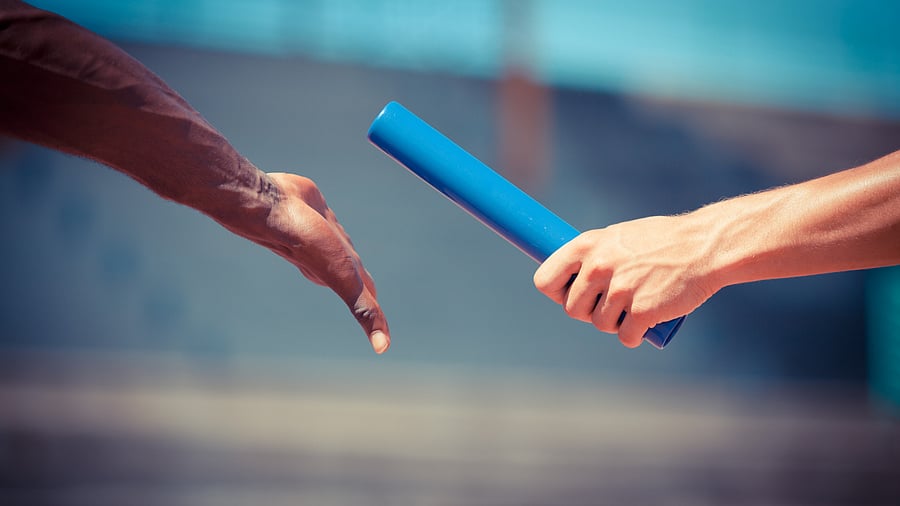
Representative image showing athletes.
Credit: iStock Photo
With teenage prodigies such as Vaibhav Suryavanshi and D Gukesh redefining the limits of achievement, the sporting world is witnessing a new wave of teenage brilliance. However, such success stories are rare. The pursuit of a career in sports is often elusive, with barely 1% of aspirants managing to make it a profession.
Given that most young athletes compromise their academic learning to prioritise a potential sporting career, it is of vital to question the economic cost of this trade-off. With a professional sporting career lasting, at best, around forty years, many national and state-level athletes struggle to establish themselves outside sport. They are often compelled to take up modest, entry-level jobs through sports quotas, and some take up jobs as auto and cab drivers or construction labourers.
The costs of sports coaching, equipment, and apparel are considerable; students and their parents specnd a fortune in pursuit of a sporting career. Budding athletes often enrol in schools and colleges where financial assistance is rare.
The greater, often hidden, cost for athletes, however, is that of the ‘second innings’ -- the cost of transitioning into another career once their sporting days are over. There is a stark absence of a supportive ecosystem for Indian athletes, unlike countries such as Canada, which has the ‘Game Plan’ initiative to help athletes develop skills for alternative careers, or the UK, where a similar programme exists under the name Life After Professional Sports (LAPS). In 2024, India’s Ministry of Youth Affairs and Sports launched the RESET (Retired Sportsperson Empowerment Training) programme with the commendable aim of making former athletes more employable. It seeks to support retired athletes aged 20-50 who have participated in or won medals at international, national and state-level events through a self-paced learning portal combined with on-the-ground training and internships -- an important first step.
Research shows the positive impact of playing sport on an individual’s overall physical and mental health and well-being. There is also evidence that greater sports participation enhances pro-social behaviour and reduces crime and anti-social tendencies, particularly among young men. Sport can act as a powerful catalyst for economic growth, contributing to national well-being and fostering a healthier, wealthier society; it is far more than mere recreation. According to the National Sports Development Code of India, 2011, sport is a public good, and sports development is a public function. At the level of national policy, sport is to be treated on par with public health and education. However, unlike health or education, sport is popularly viewed as a form of entertainment -- exclusive and accessible mainly to the wealthy -- ignoring its wider societal benefits. On average, India spends a meagre 0.06% of the total government expenditure on sports, compared to Iceland’s at 3.3%, Hungary’s 1.7% and Sweden’s 1.2% in 2022.
Beyond pride and prestige, sports can drive economic growth when developed strategically and efficiently. Revenue generated during the construction of sports stadiums is largely comes from employment, procurement of goods and services, and benefits to allied industries. Five of the stadiums, owned by the Sports Authority of India (SAI), generated a revenue of around Rs 218 crore in 2023-24. SAI’s equipment support division procured goods and services worth Rs 38,75,06,477. While a significant share of budgetary funds of Rs 2,462.59 crore allocated to the Department of Sports in 2023-24 is directed towards developing sports infrastructure and supporting young athletes, only 0.2% was earmarked as pensions for meritorious sportspersons.
For athletes, a dual career is not merely desirable but fundamentally essential. Student-athletes suffer academically due to long absences away from university and the lack of flexible course delivery options. Universities in India often ‘support’ high-performing athletes by granting them attendance or being lenient in assessments. This, to say the least, is far from adequate.
Much sought-after competencies such as teamwork, discipline, resilience, and leadership are often better cultivated through sports. There remains a serious gap in providing customised educational programmes for athletes, designed to integrate these skills and facilitate a successful and fulfilling career transition.
Winning isn’t everything, but wanting to win is. -Vince Lombardi
If pursuing sport is seen as a viable career option, with structured fallback plans and income security, more people are likely to invest their time and resources in training. This, in turn, can expand the talent pool and lead to greater international success.
It is unfortunate that out of a population of 1.4 billion, India’s contingent for the Paris Olympics comprised just 117 athletes competing across 16 disciplines. The team failed to make a mark, finishing with only six medals and ranking 71st overall -- a decline from the Tokyo Olympics, where India was placed 48th. It is therefore imperative to create mechanisms that encourage wider participation and investment in sport. A well-supported sporting ecosystem is not just a social obligation but also a strategic economic investment.
(Aishwarya is a research scholar and Pushkarni is an associate dean at the School of Economics and Public Policy, RV University)